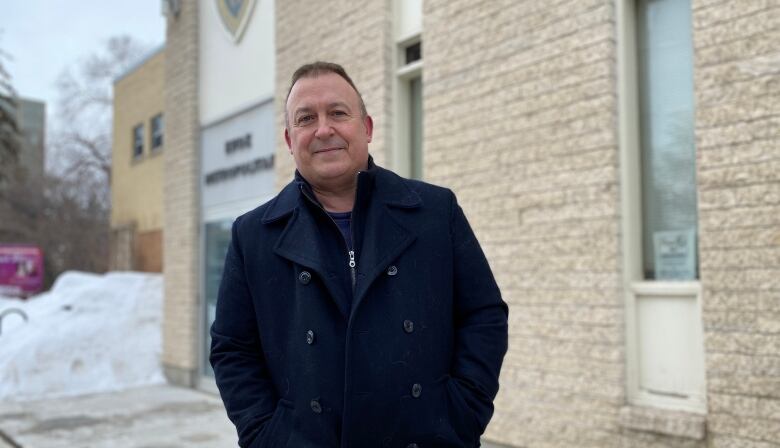Regina mother, poverty experts say Saskatchewan’s social safety net is falling behind | CBC News
Everything seems to be getting more expensive. Food, gas and housing prices are on the rise while paycheques are slow to keep pace.
The CBC News series Priced Out explains why you’re paying more at the register and how Canadians are coping with the high cost of everything.
Miranda Hanis can barely afford the Regina basement apartment she lives in. The pandemic has only made matters worse.
“The last year and a half has been really rough and uncertain. It’s been very hard to make plans for the future,” Hanis said.
She said the Saskatchewan Income Support (SIS) cheque she gets every month is the only thing keeping a roof over her head. She receives $860 a month from SIS, but it’s not enough to live on.
“My finances have been pretty tight between me and my son, and I don’t know where I would live if I wasn’t living with my son. And he works part time. The finances are pretty tight between him and I,” she said.
With the cost of just about everything rising, Hanis said she’s had to turn to food banks for help.
“I could buy meat a little bit before, but now it’s just like, I look at it and I go, ‘Whoa.’ If it’s not discounted, it’s not going to happen. It’s winter, produce is really hard to buy. It’s tough.”
Hanis got laid off a few years ago and hasn’t been able to secure a new job since. The day after she lost her job, the price of her low-income housing went up.
“There went most of my savings, most of my money. It happened in two days. And I’ve never been able to bounce back since.”
High levels of poverty
Hanis’s case isn’t isolated. A recent report from the University of Regina shows nearly 20 per cent of the province’s population lives in poverty, with child poverty rates sitting at 26 per cent.
“Saskatchewan and Manitoba are two of the provinces in Canada who have the highest poverty level in the country. The benefits level is absolutely inadequate,” said Miguel Sanchez, an associate professor in the faculty of social work at the University of Regina.
Sanchez said Saskatchewan has some of the worst depth of poverty rates in the country.
“Depth of poverty is the amount of money that a family who lives below the poverty line requires to reach the poverty level,” he said.
Anti-poverty advocates blame SIS, which went into effect in August 2021, replacing previous programs. The change reduced the amount of money going to most residents on social assistance.
Under the SIS program, clients are allocated a shelter budget and must pay rent and utilities themselves each month from the money they are given. Under SIS, a single adult receives $575 a month for shelter and utilities, and another $285 a month for food and all other expenses.

Peter Gilmer, a case worker at the anti-poverty ministry in Regina, said he sees more people struggling to make ends meet under SIS every day.
“It’s a very difficult position that people are having to make between food, utilities and being able to keep a roof over their heads,” he said. “The worst of that is the fact that people are being forced into abject homelessness.”
He said SIS is causing extreme and deepening poverty in the province.
“We’re seeing people that are having to make extremely difficult decisions. People are increasingly desperate. The stress levels of people that we’re working with are at an all time high,” he said. “So what we’re definitely calling for is to ensure that the benefits for the SIS and other programs are increased.”
Social assistance not indexed to inflation
Social assistance programs haven’t kept up with Canada’s inflation rate. According to Statistics Canada, year-over-year prices rose faster in January 2022 than in December 2021 in six provinces.
Year-over-year prices increased in Ontario by 5.7 per cent, in Manitoba by 5.5 per cent and in Saskatchewan by 4.2 per cent, with higher electricity prices contributing to the gains.
According to anti-poverty Maytree Group, only Quebec and New Brunswick peg their social income programs to inflation.
“For a long time in Canada, welfare incomes and social assistance in particular haven’t been a significant priority for governments. Because social assistance programs are not indexed in most jurisdictions, the rates have fallen,” said Mohy Tabbara, a policy advisor at Maytree group.
“If you look at welfare rates over time, how much people get over time has decreased over time because of the lack of indexation. And what is happening right now is only worsening the situation.”
Tabbara said the pandemic has made it worse for Canadians on social assistance.
“Social assistance programs are very inadequate across the country,” he said.
Tabbara is calling for social assistance income rates to be increased and indexed to inflation.
“In a country like Canada, we should really try to provide support that’s adequate and provide people with a life of dignity, and that’s not what’s happening right now,” Tabbara said.
As for Hanis, she said that with little help and job prospects in sight, it’s hard to have any hope for a bright future.
“There’s no dignity in this program. They’ve taken that away too.”
For all the latest business News Click Here

